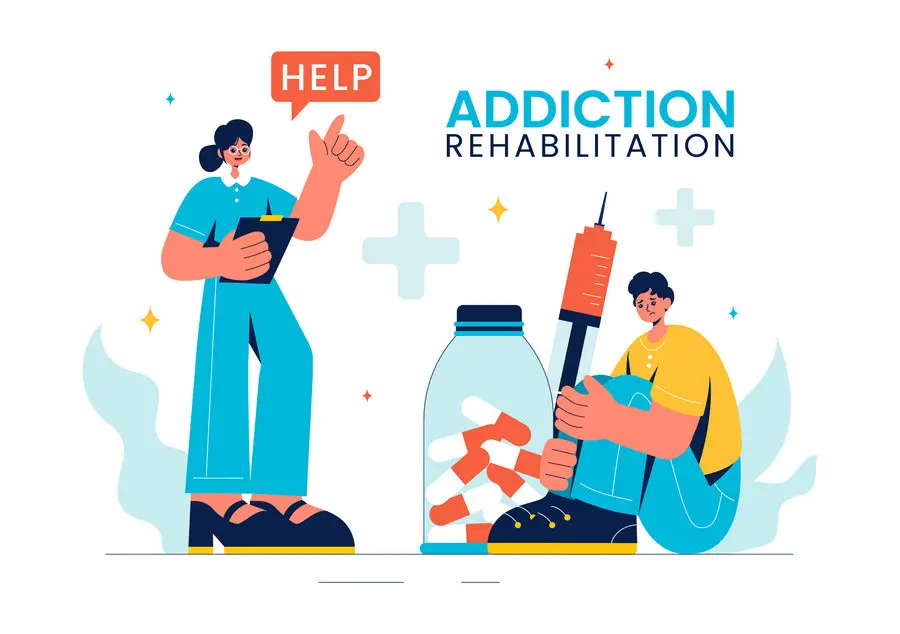
By 2025, telehealth is expected to revolutionize rehab centers across the USA, enhancing patient access and engagement. This technology allows for remote consultations and personalized treatment plans, reducing travel barriers and increasing flexibility for patients. As a result, rehab centers can improve outcomes and streamline care delivery, ultimately leading to a more efficient healthcare system and better support for individuals in recovery.
As we look ahead to 2025, the integration of **telehealth** services into **rehab centers** across the USA presents a transformative shift in how patients receive care. The COVID-19 pandemic accelerated the adoption of telehealth, but its long-term impact on rehabilitation services is only beginning to be understood. This article explores the implications of telehealth on rehab centers, focusing on accessibility, treatment efficacy, and patient engagement.
One of the most significant impacts of telehealth on rehab centers is the increased **accessibility** of services. Patients in remote or underserved areas often struggle to find the necessary rehabilitation services. Telehealth bridges this gap by allowing them to connect with specialists without the need to travel long distances.
According to a recent survey, approximately 70% of rehab centers reported an increase in patient inquiries about telehealth options. This shift not only serves patients in rural areas but also accommodates those with mobility challenges or other health issues that make in-person visits difficult. The flexibility of telehealth means that more individuals can access critical rehabilitation services, improving overall outcomes and patient satisfaction.
Another crucial advantage of telehealth is its potential to enhance the **efficacy of treatment** programs. With the ability to conduct remote assessments, therapists can monitor patients' progress in real-time and adjust treatment plans as needed. This dynamic approach fosters a more personalized rehabilitation experience.
For instance, a patient recovering from a stroke can participate in virtual therapy sessions with a speech-language pathologist who can assess their progress and modify exercises accordingly. This immediate feedback loop is essential for effective rehabilitation, as timely adjustments can lead to better recovery rates.
Telehealth platforms often come equipped with interactive tools and resources that can significantly boost **patient engagement**. Gamified exercises, virtual coaching, and regular check-ins help maintain motivation and adherence to treatment plans. Engaged patients are more likely to follow through with their rehabilitation, leading to improved outcomes.
Moreover, telehealth allows rehab centers to foster a community among patients. Online support groups and forums can facilitate peer-to-peer interaction, creating a sense of belonging and encouragement that is often lacking in traditional rehab settings. This communal support can be particularly beneficial for individuals dealing with long-term recovery processes.
In addition to improving accessibility and treatment efficacy, telehealth can also provide **cost-effective solutions** for rehab centers and patients alike. By reducing the need for physical space and resources, centers can allocate funds more efficiently. For patients, telehealth eliminates travel costs and time off work, making rehab services more affordable.
According to a study by the American Rehabilitation Association, facilities that adopted telehealth services reported a 30% reduction in operational costs. This financial benefit allows rehab centers to reinvest in their services, enhancing the overall quality of care.
While the benefits of telehealth in rehab centers are substantial, there are also challenges that need addressing. One major concern is the **digital divide**, which refers to the gap between those who have access to technology and the internet and those who do not. Some patients may lack the necessary devices or reliable internet connections, hindering their ability to participate in telehealth services.
Another consideration is the need for training among healthcare professionals. Rehab therapists must be proficient in using telehealth technologies to provide effective care. Ongoing education and support will be crucial in ensuring that providers can leverage these tools to their fullest potential.
Looking toward 2025, several trends are likely to shape the future of telehealth in rehab centers. First, the enhancement of **artificial intelligence** (AI) and **machine learning** technologies will enable more sophisticated treatment plans. AI can analyze patient data and predict outcomes, allowing therapists to tailor interventions more effectively.
Second, the integration of wearable technologies will provide real-time data on patients' physical activity and progress. This information will be invaluable for therapists working remotely, as they can use it to make informed decisions about treatment adjustments.
Lastly, as telehealth becomes more widely accepted, we can expect greater collaboration between healthcare providers and rehab centers. This teamwork will enhance the continuity of care, ensuring that patients receive comprehensive support throughout their recovery journeys.
In conclusion, the impact of telehealth on rehab centers in the USA by 2025 will be profound. From enhancing accessibility and treatment efficacy to boosting patient engagement and cost-effectiveness, telehealth is set to revolutionize the rehabilitation landscape. However, challenges such as the digital divide and the need for professional training must be addressed to maximize these benefits. By embracing telehealth innovations, rehab centers can provide better care and improve outcomes for patients in an increasingly digital world.

Holistic Approaches in Rehab Centers: What to Expect in the USA by 2025

The Evolution of Rehab Centers: Trends and Predictions for 2025

Innovative Technologies Transforming Rehab Centers in the USA by 2025

The Impact of Tax Deductions on Donation Trends in the USA: A 2025 Perspective

Rehab Centers in the USA: The Future of Treatment Approaches in 2025

Understanding the Role of Mental Health in Rehab Centers Across the USA in 2025

How Rehab Centers in the USA are Adapting to Substance Abuse Trends in 2025

Elite Rehab Centers – Luxury Recovery in a Supportive Environment